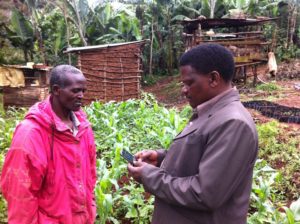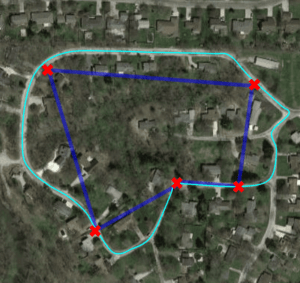
Search
During a recent TaroWorks webinar on the Future of ICT4Ag, John Corbett from aWhere, an agriculture data provider, made an important point about AgTech: Before rolling out new technologies to the field, technology companies should check with the small-holder farmers to ensure that they actually need the tools under development.
“A lot of this technology … its adoption is dependent on whether it solves a problem …[Sometimes] the entrepreneur tries to present what they’re doing as like the center of some big wheel and hub concept … [but] the user really is going to selectively run the apps that make the most sense to solve their problems.” – TaroWorks Webinar: The Future of ICT4Ag

Source: TaroWorks
John’s comment reminded me of a news story in the Tanzania Daily News in March 2012 that ran under the dramatic headline “Whispers of a Dynamite Fishing Witness.”
Dynamite fishing has long been a problem in Tanzania. It kills fragile reef ecosystems, often maims or kills the fishermen who engage in it, and kills way more than it yields in terms of edible catch. It’s bad for the environment, bad for the subsistence fishermen, and wildly inefficient.
So, one well-meaning government agency thought they had a solution to what must be an economic problem: give the fishing villages nets and better boats and the explosions would stop. But, the article concludes:
“[The project leader] differs with people who claim that fishermen continue to engage in dynamite fishing because their undersize nets were confiscated and they had no alternative source of income. ‘I believe lack of modern fishing gear has not fueled dynamite fishing. The Marine Park authorities gave two boats with motors and fishing nets to two communities in order to help them get a better catch. Surprisingly these communities stashed the nets in their storerooms and use the boats to ferry people from one village to another.’”
I read a similar story about another Tanzanian village using their donated tractors as taxis rather than to plow their fields and there’s been no shortage of debate over whether fishermen actually use the mobile phones they’ve been given to check market prices.
To steal a phrase from sales gurus Robert Miller and Stephen Herman: people use technology for their own reasons, not yours.
Sometimes this can lead to unexpected great products. The idea for the famous M-PESA mobile payments system first emerged when Safaricom noticed that Kenyans were using airtime purchases as a proxy for cash transfers.
But in ICT4D AgTech, a lot of organizations still rush through user feedback. Despite the spread of development philosophies like The Lean Startup and design thinking, which have pushed technology firms to think much more about user discovery and to “get out of the building“, there is still a lot of “if you build it, they will come” product creation going on.
To be fair, particularly in Kenya, I see a lot of farmer-centric AgTech innovation going on. iProcure, Esoko, and FarmDrive come to mind as organizations that are laser focused on building “full-stack” ICT4Ag startups with a clear value proposition for the end-user farmers.
But you don’t need to be a full-stack, vertically integrated startup to provide farmer-relevant AgTech features, especially if those features result from needs expressed by your end users. For example, TaroWorks + SalesForce is a horizontal platform that many agricultural organizations use in conjunction with other apps and partners to manage networks of extension workers or sales and distribution field agents.

Land area calculation. Source: TaroWorks
Recently TaroWorks’ own Erin Yamaoka, responded to feature requests from agricultural extension agents at several different TaroWorks customers by developing a method to calculate land area using TaroWorks’ ability to capture GPS coordinates. All that’s needed is an Android phone, the TaroWorks app and Salesforce to crunch the numbers. You can then use that data to extrapolate the amount of fertilizer or seed required, or estimate yield.
In a recent trial in Burkina Faso, it was found to be accurate to within a one-hundredth of a hectare. No upgrade was needed and this feature is already in use in the field.
Lee Babcock of Grameen Foundation, who also participated in the webinar, offered a guiding development principle for AgTech that we’d be well-advised to heed. Even if someone else pays for it, AgTech solutions need to demonstrate a positive ROI for the small-holder farmer as well.
“It doesn’t matter how brilliant the application is designed, the fact of the matter is … farmers that live at the base of the economic pyramid…can’t afford to make an investment on day one and then not get a return on that investment until the end of month nine when they harvest.”
It’s an exciting time in ICT4Ag. No one knows exactly what dumb ideas will turn out to be great ones and what seeming no-brainers turn out to have no value. But startups and developers that take time to understand small-holder farmers and their actual needs, will be the ones whose ideas have the highest chance of success.
Editor’s Note: Join TaroWorks at the ICTforAg conference in Washington, DC on June 23rd.
POST TOPICS
NEXT POST
Sign up to receive emails with TaroWorks news, industry trends and best practices.
TaroWorks, a Grameen Foundation company.
Site by V+V